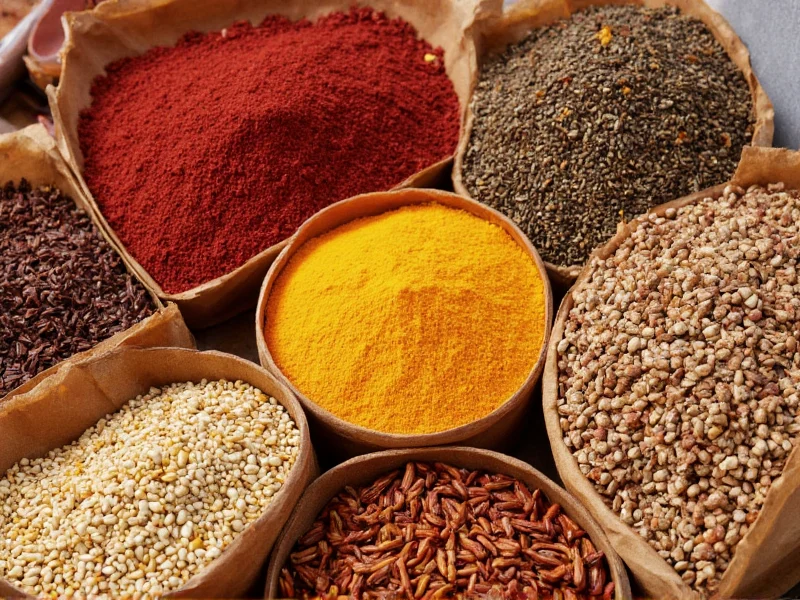Understanding Middle Eastern spices unlocks the authentic flavors of one of the world's most celebrated culinary traditions. These spices aren't just ingredients—they're cultural artifacts passed down through generations, each contributing unique characteristics to regional dishes across Lebanon, Syria, Israel, Jordan, Palestine, and surrounding areas.
Essential Middle Eastern Spices Explained
Cumin (Kamoun)
Cumin delivers a warm, earthy flavor with subtle citrus notes that's absolutely fundamental to Middle Eastern cooking. This ancient spice appears in nearly every savory dish across the region, from hearty stews to delicate rice preparations. When toasted properly, cumin develops a complex aroma that forms the backbone of many spice blends. Professional chefs recommend dry-toasting whole cumin seeds before grinding to maximize flavor intensity—a technique that transforms ordinary dishes into authentic culinary experiences. Among the most common Middle Eastern spices for cooking, cumin pairs exceptionally well with lamb and chickpeas, making it indispensable for traditional dishes like kibbeh and falafel.
Coriander
Often confused with cilantro (its leafy counterpart), coriander seeds offer a citrusy, slightly sweet flavor that balances richer spices. Ground coriander appears in virtually all Middle Eastern spice mixtures, providing brightness that cuts through fatty meats and rich sauces. The seeds contain natural oils that release their full flavor when gently toasted—a crucial step many home cooks overlook when attempting authentic middle eastern seasoning recipes. Coriander works particularly well with fish and vegetable dishes, adding complexity without overwhelming other flavors.
Sumac
This deep red spice delivers a distinctive tangy, lemony flavor without the moisture of fresh citrus. Harvested from wild sumac berries, this spice transforms simple dishes with its vibrant acidity. How to use sumac in Middle Eastern cuisine properly makes all the difference—it's typically sprinkled over finished dishes rather than cooked extensively. You'll find sumac generously dusted over fattoush salad, grilled meats, and even mixed with olive oil as a dip for fresh bread. Its high vitamin C content made it historically valuable in regions where fresh citrus wasn't always available, contributing to middle eastern spices health benefits.
Za'atar
More than just a spice, za'atar represents a cultural institution across the Middle East. This versatile blend typically combines thyme, sumac, sesame seeds, and often oregano or marjoram, though regional variations exist. In Lebanon, za'atar might contain more sumac for tartness, while Palestinian versions often feature more thyme. Authentic za'atar isn't just for sprinkling—many families prepare elaborate breakfast spreads featuring za'atar mixed with olive oil and served with warm flatbread. Understanding traditional Middle Eastern spice blends reveals how this mixture functions as both seasoning and condiment, appearing in everything from manakeesh (flatbread) to roasted vegetables.
| Spice | Flavor Profile | Common Uses | Storage Tip |
|---|---|---|---|
| Cumin | Earthy, warm, slightly citrusy | Hummus, falafel, meat dishes | Store whole seeds; grind as needed |
| Sumac | Tangy, lemony, slightly floral | Salads, grilled meats, dips | Keep in airtight container away from light |
| Za'atar | Herbaceous, tangy, nutty | Bread, vegetables, yogurt dips | Add sesame seeds just before use |
| Baharat | Warm, complex, slightly sweet | Meat rubs, rice dishes, stews | Mix fresh for each use when possible |
Signature Middle Eastern Spice Blends
Baharat: The Universal Blend
Meaning "spices" in Arabic, baharat varies significantly by region but typically includes black pepper, cumin, coriander, cinnamon, and cloves. This versatile mixture serves as the foundation for countless meat dishes and rice preparations. The Lebanese version often contains more cinnamon and allspice, while Gulf countries might incorporate cardamom and nutmeg. When exploring authentic Middle Eastern seasoning recipes, baharat proves indispensable for achieving that characteristic depth of flavor. Many cooks maintain that freshly ground baharat makes a dramatic difference compared to pre-mixed versions—a key consideration for those seeking where to buy Middle Eastern spices with optimal freshness.
Ras el Hanout: The Chef's Blend
Translating to "head of the shop," this premium Moroccan blend represents a spice merchant's finest offering. While recipes vary, it typically contains 15-30 different spices, including rare ingredients like monk's pepper and grains of paradise. Unlike standardized blends, each shop's ras el hanout reflects the owner's personal taste and expertise. This luxurious mixture appears in special occasion dishes and tagines, adding complexity that transforms simple ingredients into extraordinary meals. Understanding the difference between baharat and za'atar helps home cooks navigate the nuanced world of Middle Eastern spice combinations.
Practical Applications in Your Kitchen
Building Flavor Layers
Middle Eastern cooking relies on strategic spice layering rather than single-note seasoning. Start with toasted cumin and coriander as your base, then add finishing spices like sumac or za'atar at the end. For authentic results when recreating traditional dishes, bloom spices in hot oil before adding other ingredients—a technique that releases essential oils and creates a flavor foundation for the entire dish. This approach makes a significant difference when attempting middle eastern spices list with descriptions beyond simple ingredient substitution.
Storage and Freshness
Proper storage dramatically affects spice potency. Keep whole spices in airtight containers away from heat and light, grinding only what you need for immediate use. Ground spices lose potency within 6 months, while whole spices maintain flavor for up to 2 years. For the most common Middle Eastern spices for cooking, consider buying smaller quantities more frequently to ensure maximum freshness. Many specialty stores now offer vacuum-sealed options that preserve flavor longer—a worthwhile investment for serious cooks exploring authentic Middle Eastern cuisine.











 浙公网安备
33010002000092号
浙公网安备
33010002000092号 浙B2-20120091-4
浙B2-20120091-4